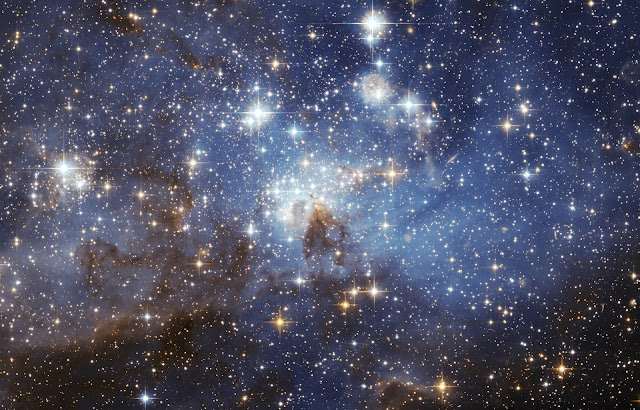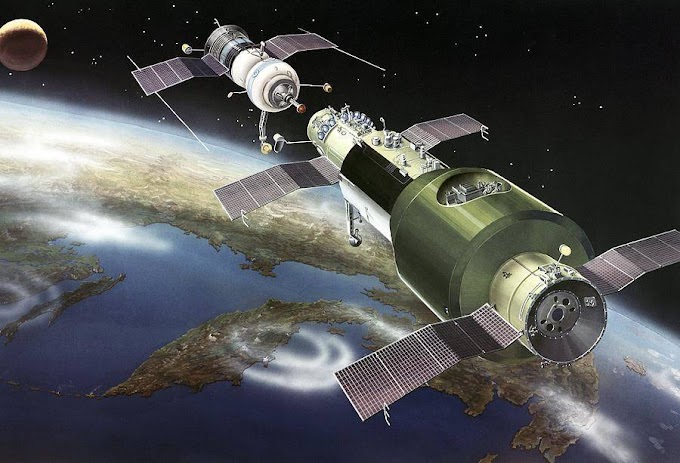The most well-known strategy cosmologists use to decide the composition of stars, planets, and different items is spectroscopy. Today, this interaction utilizes instruments with a grinding that fans out the light from an article by frequency. This spread-out light is known as a spectrum. Each component — and blend of components — has a remarkable fingerprint that cosmologists can search for in the spectrum of a given item. Recognizing those fingerprints permits analysts to figure out what it is made of.
That fingerprint regularly shows up as the assimilation of light. Each iota has electrons, and these electrons like to remain in their most minimal energy design. In any case, when photons conveying energy hit an electron, they can support it to higher energy levels. This is assimilation, and every component's electrons retain light at explicit frequencies (i.e., energies) identified with the distinction between energy levels in that molecule.
Also read: Ice Skating | How Does Temperature Affect The Friction?
In any case, the electrons need to get back to their unique levels, so they don't clutch the energy for long. At the point when they produce the energy, they discharge photons with the very same frequencies of light that were caught up in any case. An electron can deliver this light toward any path, so a large portion of the light is radiated in bearings from our view. Hence, a dull line shows up in the spectrum at that specific frequency.
Since the frequencies at which retention lines happen are one of a kind for every component, space experts can gauge the situation of the lines to figure out which components are available in an objective. The measure of light that is assimilated can likewise give data about the amount of every component is available.
The more components an item contains, the more convoluted its spectrum can turn into. Different components, like movement, can influence the places of otherworldly lines, however not the dividing between the lines from a given component. Luckily, PC displaying permits specialists to distinguish various components and mixtures even in a jam-packed spectrum, and to recognize lines that seem moved because of movement.
As of late, cosmologists found a far-off nearby planetary group, 127 light-years away with up to seven planets circling a Sun-like star called HD 10180.
Like the absolute first exoplanet 51-Pegusus found in 1995, this new framework was discovered utilizing the study of spectroscopy.
Indeed, the greater part of the around 500 planets so far found circling different stars, were distinguished by a similar strategy.
Spectroscopy — the utilization of light from a far off object to work out the article is made of — could be the absolute most integral asset cosmologists use, says Professor Fred Watson from the Australian Astronomical Observatory.
"You take the light from a star, planet, or system and pass it through a spectroscope, which is a bit like a crystal allowing you to part the light into its segment tones.
"It allows you to see the synthetics being ingested or discharged by the light source. From this you can work out a wide range of things," says Watson.
When warmed or when electrically charged, certain synthetic compounds transmit radiation at unmistakable tones or frequencies called discharge lines.
There are additional ingestion lines that show up as dull imprints separating the spectrum at explicit frequencies.
Ingestion lines are made when light from something hot like a star goes through a cooler gas, counterbalancing the outflow lines the synthetic substances in the gas would typically make.
At the point when you take a gander at the spectrum of a star, for instance, you can see ingestion lines because the star's external environment is cooler than the focal part, clarifies Watson.
Spectroscopy additionally allows you to decide whether an item is moving towards or away from you by the adjustment of recurrence of the frequency — or the Doppler impact.
When something moves towards you it packs the sign frequency it emanates, while in case it's moving away from you, it extends that waveform.
"We hear it as the adjustment of the pitch of a train's horn as it passes us," says Watson.
"In light waves, it causes things moving towards you to move to more limited frequencies at the blue finish of the spectrum. Also, objects moving away from you shift to longer frequencies, at the red finish of the spectrum."
Stargazers utilized the Doppler impact to track down the new close planetary system, says Watson.
As planets circle a star, they cause it to wobble slightly. By watching the stars' spectrum, researchers could see a slight change in where the essential assimilation lines are contrasted with where they ought to be, which disclosed to them a planet was making the star wobble.
"The level of the wobble revealed to them how large the planet causing it was, the pace of wobble disclosed to them how out of sight planet was circling, and the way that there were various wobbles, each slightly unique, told researchers the number of planets there were," says Watson.
A spectrum is just a diagram or a chart that shows the power of light being produced over a scope of energies. Have you at any point seen a spectrum previously? Likely. Nature settles on lovely ones we decision rainbows. Sunlight sent through raindrops is fanned out to show its different shadings (the various tones are only how our eyes see radiation with slightly various energies).
Spectroscopy can be extremely valuable in assisting researchers with seeing how an article like a dark opening, neutron star, or dynamic system delivers light, how quick it is moving, and what components it is made out of. Spectra can be created for any energy of light, from low-energy radio waves to extremely high-energy gamma beams.
Every spectrum holds a wide assortment of data. For example, there is a wide range of instruments by which an item, similar to a star, can deliver light. Every one of these instruments has a trademark spectrum.
Every component in the intermittent table can show up in a vaporous structure and will create a progression of brilliant lines interesting to that component. Hydrogen won't look like helium which won't look like carbon which won't look like iron... etc. Consequently, cosmologists can distinguish what sorts of stuff are in stars from the lines they find in the star's spectrum. This sort of study is called spectroscopy.
The study of spectroscopy is very modern. From otherworldly lines, stargazers can decide the component, yet the temperature and thickness of that component in the star. The ghostly line likewise can inform us concerning any attractive field of the star. The width of the line can disclose to us how quick the material is moving. We can find out about breezes in stars from this.
If the lines shift to and fro we can discover that the star might be circling another star. We can appraise the mass and size of the star from this. If the lines become stronger, we can find out about the actual changes in the star. Phantom data can likewise educate us concerning material around stars. This material might be falling onto the star from a donut molded circle around the star called a growth plate.
These plates frequently structure around a neutron star or dark opening. The light from the stuff between the stars permits stargazers to contemplate the interstellar medium (ISM). This mentions to us what sort of stuff occupies the space between the stars. Space isn't vacant! There are bunches of gas and residue between the stars. Spectroscopy is one of the central instruments which researchers use to contemplate the Universe.








0 Comments
Thanks for your feedback.